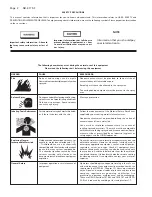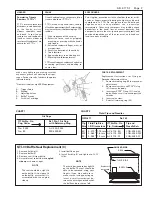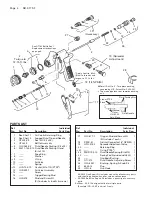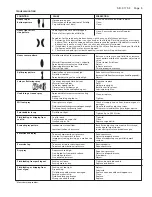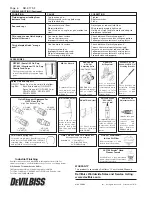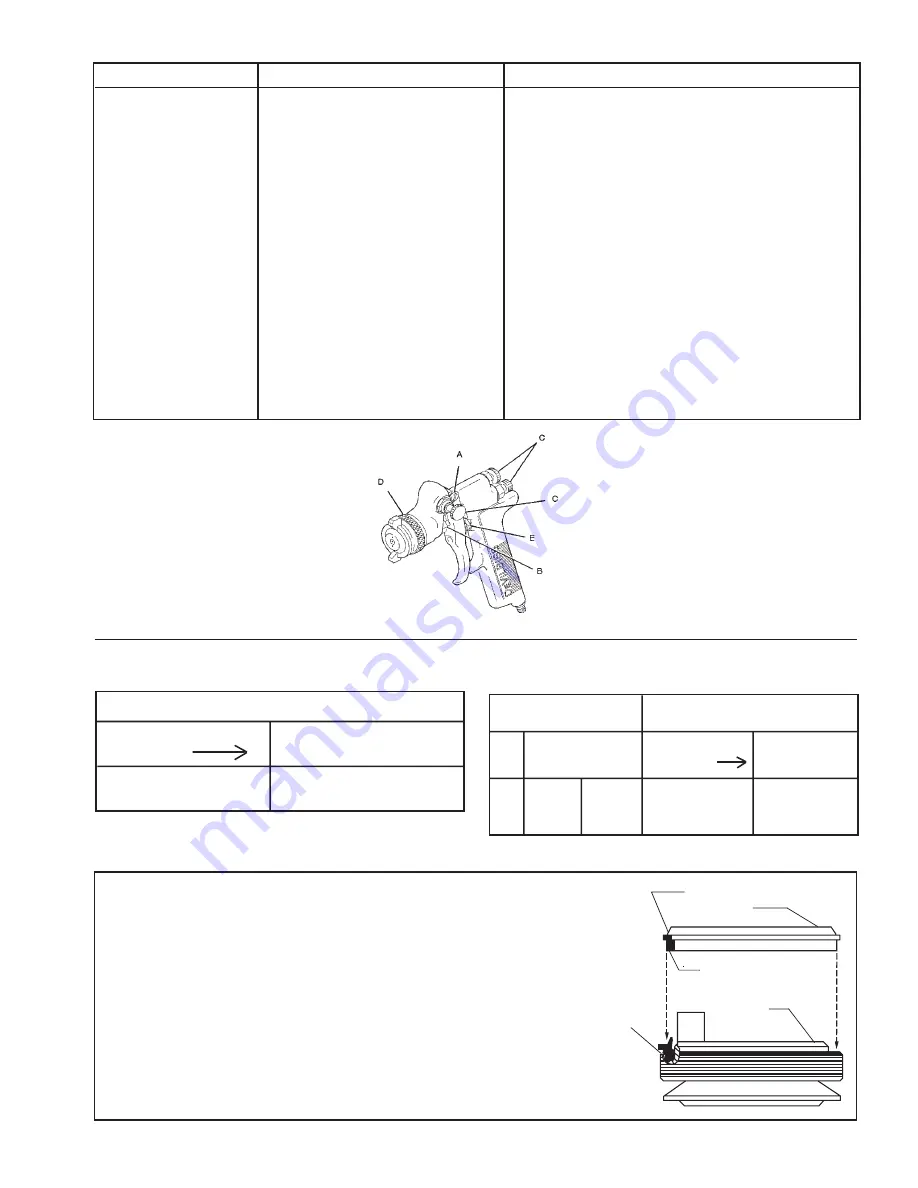
SB-2-179-F Page 3
Use of hand tools may casue cumulative
trauma disorders ("CTD's").
CTD's, when using hand tools, tend to
affect the upper extremities. Factors which
may increase the risk of developing a CTD
include:
1 . High frequency of the activity.
2 . Excessive force, such as gripping,
pinching, or pressing with the hands
and fingers.
3 . Extreme or awkward finger, wrist, or
arm positions.
4 . Excessive duration of the activity.
5 . Tool vibration.
6 . Repeated pressure on a body part.
7 . Working in cold temperatures.
CTD's can also be caused by such activities
as sewing, golf, tennis, and bowling, to
name a few.
Pain, tingling, or numbness in the shoulder, forearm, wrist,
hands, or fingers, especially during the night, may be early
symptoms of a CTD. Do not ignore them. Should you
experience any such symptoms, see a physician
immediately. Other early symptoms may include vague
discomfort in the hand, loss of manual dexterity, and
nonspecific pain in the arm. Ignoring early symptoms and
continued repetitive use of the arm, wrist, and hand can
lead to serious disability.
with a very light grease, making sure that
any excess grease will not clog the air pas-
sages. For best results, lubricate the points
indicated, daily.
*Not for air tools or high RPM equipment.
A.
Trigger Points
B.
Packing
C .
Adjusting Valves
D.
Baffle Threads
E.
Air Valve Cartridge
HAZARD
CAUSE
SAFEGUARDS
PARTS REPLACEMENT
Replacement Instructions for O-ring on
Spreader Adjustment Valve
1.
Remove retaining ring (20) on spreader
adjustment.
2.
Remove valve stem and PTFE
®
O-ring
(21) from valve body.
3.
Insert new PTFE
®
O-ring (21) in valve
body. Make sure it is pushed past the
threads.
4.
Insert valve stem.
5.
Reinstall retaining ring (20).
CHART 1
Air Caps
If This No. On
Ref. No. 1 Air Cap
Cap, Order
with Retaining Ring
No. 9000
AV-440-9000
No. 80
MB-4039-80
Cumulative Trauma
Disorders ("CTD's")
CTD's, or musculoskeletal
disorders, involve damage
to the hands, wrists,
elbows, shoulders, neck,
and back. Carpal tunnel
syndrome and tendonitis
(such as tennis elbow or
rotator cuff syndrome) are
examples of CTD's.
CHART 2
Fluid Tips and Needles
GFG-517
Ref. #2
Tip
Fluid Tip Size
If This No. On
Tip and
Size I.D. Dimensions
Tip, Order
Needle Sets
EX
0 . 0 7 0 " 1.75 mm AV-2115-EX
JGA-4040-EX
FW
0 . 0 6 3 " 1.6 mm
AV-2115-FW
JGA-4040-FW
FF
0 . 0 5 5 " 1.4 mm
AV-2115-FF
JGA-4040-FF
1. Remove fluid tip (2).
2. Remove baffle (4).
3. Remove seal (3) from baffle.
4. Assemble seal to baffle with
angled
side up
as shown at right.
NOTE
The seal should be a tight fit
on the baffle. If it is a loose fit
on the baffle, assure that it is
assembled with the angled
side up.
5. Install baffle on gun.
6. Install fluid tip (2) and tighten to 12-15
ft-lbs.
NOTE
The seal is designed to be a tight fit
on the baffle. The seal should be
able to be removed using your
fingers. If you are unable to re-
move the seal using your fingers,
insert a small screwdriver be-
tween the outer lip and the back of
the baffle and pry the seal off.
GTI-33 Baffle Seal Replacement (3)
ANGLED SIDE
THICK SIDE
SEAL
BAFFLE
Pry here if
necessary


